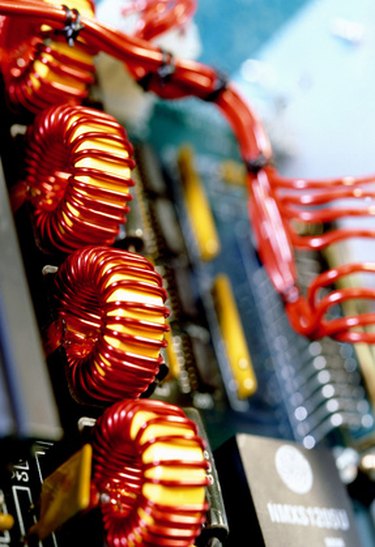
Electrical wiring, speaker wire and wires used for crafting jewelry are all subject to specification requirements based on gauge. Proper speaker wire gauge is determined by how long the wire runs, and if it's inside a wall. Electrical wiring gauge determines how much current can safely run through wires. Wires for jewelry makers are subject to physical stress factors. Use measuring tools based on the metals composing the wires to find the right gauge for your project.
Step 1
Remove the insulation from electrical wiring and speaker wires before measuring diameters. Clip the end of the wire with wire cutters and bite into the insulation 1/2 inch from the end with the cutter blades. Slice around the circumference of the insulation and slip it off the end of the wire.
Video of the Day
Step 2
Measure nonferrous wiring with wire gauge measuring tools that specify measurements for these metals. Nonferrous metals do not contain iron. Push the wire into circular slots that appear close to the diameter. Use the gauge noted beside the slot that fits the wire snugly with no gaps. Gauge tools for nonferrous wires bear a different gauge scale than those for ferrous wires.
Step 3
Measure wires containing iron using the Standard Wire Gauge (SWG). Slip bare wires into the round holes. Use the gauge listed beside the hole that best fits your wire leaving no gap.
Step 4
Measure the diameter of wires with precision scientific vernier calipers by enclosing the caliper jaws on either side of a wire and checking the scale for a measurement. Use a conversion chart, such as the one provided under Resources, to find the wire gauge based on diameter.
Video of the Day